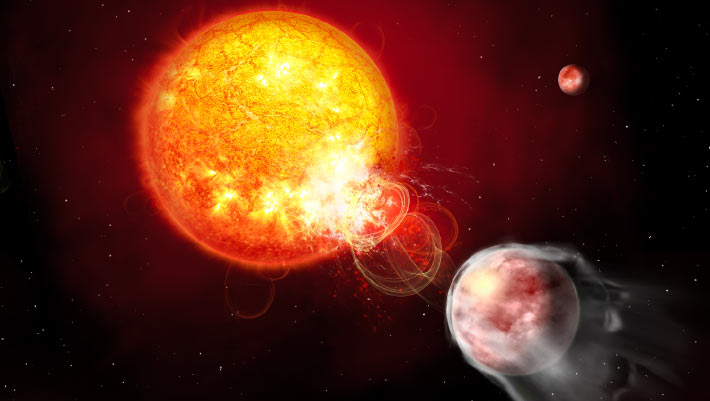Now Reading: Newly Found Exoplanet Sparks Flares on Host Star
-
01
Newly Found Exoplanet Sparks Flares on Host Star
Newly Found Exoplanet Sparks Flares on Host Star

quick summary
- Exoplanet Details: HIP 67522b is a hot-Jupiter exoplanet orbiting the G0-type star HIP 67522, located about 417 light-years away in the constellation Centaurus. The system is approximately 17 million years old, hosting two young exoplanets.
- Orbital Characteristics: HIP 67522b has an orbital period of seven days and is roughly 10 times the diameter of Earth, similar to Jupiter’s size.
- Astronomical Findings: Data from NASA’s TESS and ESA’s CHEOPS telescopes reveal that HIP 67522b interacts robustly with its parent star, triggering frequent flares on the star’s surface due to magnetic field interactions.
- Atmospheric Impact: Energetic flares are inflating and heating HIP 67522b’s atmosphere. Continuous radiation bombardment may eventually cause significant loss of atmospheric mass over time, perhaps shrinking it to a hot Neptune or sub-Neptune within approximately another 100 million years.
- Scientific Insights: Flaring activity induced by this planet-star interaction has been observed persistently for at least three years. This phenomenon offers rare observational evidence supporting theories on magnetic interactions between close-in planets and their host stars.
Indian Opinion Analysis
The discovery of planet-triggered flaring activity on its host star adds a fascinating layer to our understanding of planetary systems and their evolution. For India, which is actively investing in space research through missions like Aditya-L1 (focused on solar studies) and collaborations with international space agencies, findings such as those from HIP 67522 could enrich theoretical frameworks for studying celestial phenomena. Insights into magnetically active stars could further contribute toward improving models predicting planet survival timelines under extreme conditions.
These observations highlight how cutting-edge astronomy depends heavily on advanced instruments such as space-based telescopes-an area where india can benefit through global partnerships while bolstering local infrastructure like ISRO’s planned deep-space observatories. understanding these dynamics enhances India’s scientific standing internationally while fueling interest among young scientific minds within the country.
Read More: Click here



























